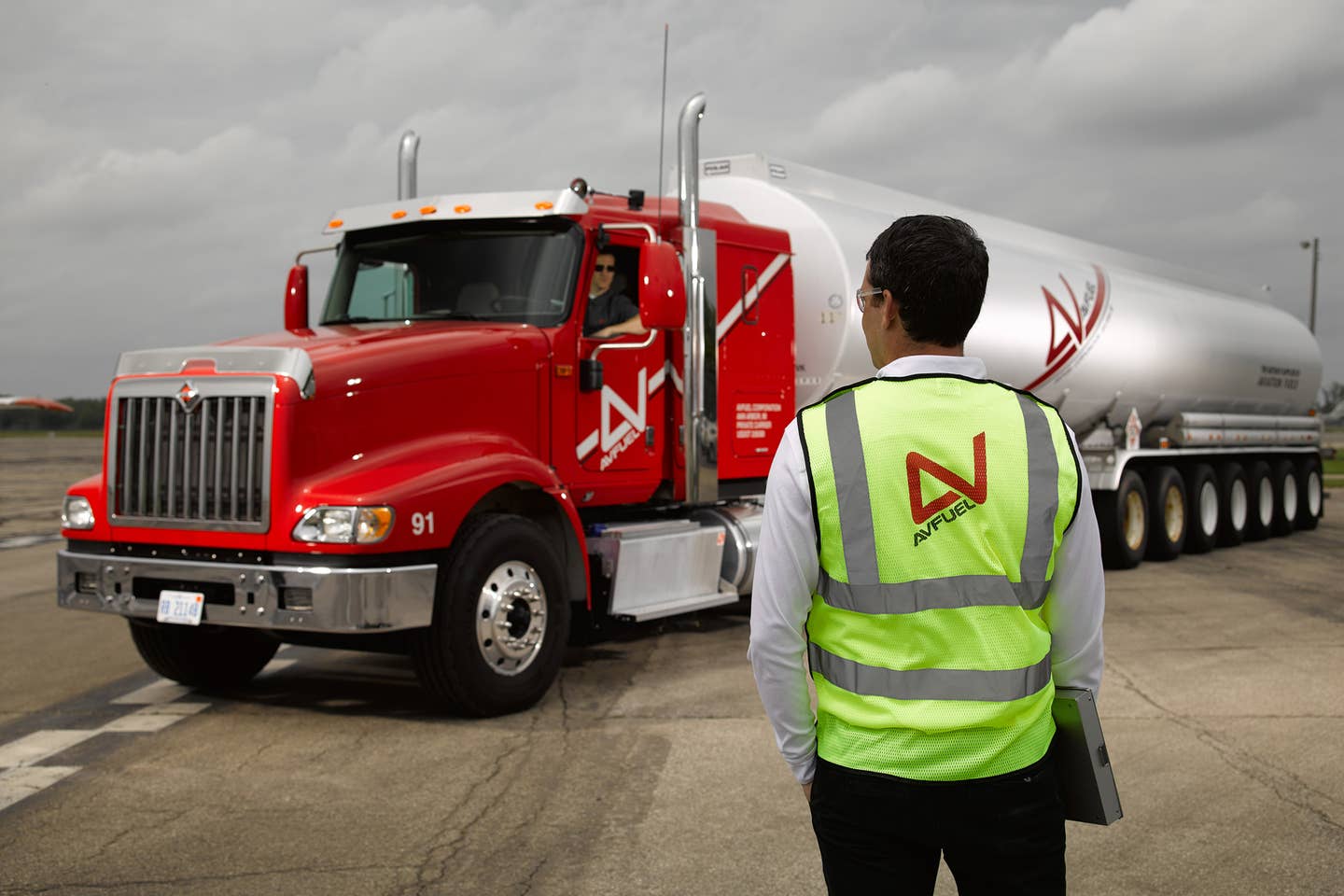
Business aviation has taken a lead on channeling demand for SAF, compelling suppliers such as AvFuel to bring the blended fuel into its network of FBOs. Courtesy of AvFuel
Long-term tax credits could be the key to kick starting momentum for a robust sustainable aviation fuel (SAF) market, according to a Department of Transportation official.
The aviation industry has been moving quickly to embrace SAF this year, including business aviation operators and FBOs, along with major airlines, energy companies, and the White House.
A “drop-in” alternative to conventional jet-A fuel, SAF is a blend of fossil fuel and renewable materials, such as cooking and plant oils or agricultural residues, that emits significantly fewer greenhouse gas emissions.
SAF use is projected to slash greenhouse gas emissions by up to 80 percent over a lifecycle, according to the National Business Aviation Association (NBAA).
While SAF is a readily usable fuel alternative, it’s expensive. Earlier this year, the Biden Administration attempted to tackle the pain at the pump through a proposed blender’s tax credit aimed at incentivizing SAF.
“We recognize that right now, there is a gap between the price of conventional jet fuel and sustainable aviation fuel, the latter being much more expensive,” Annie Petsonk, principal deputy assistant secretary for aviation and international affairs at the U.S. Department of Transportation, said Thursday.
“There are a number of ways to bridge that gap, but one of them is to use the power of the tax code to incentivize the production and blending and use of sustainable aviation fuel,” she said.
“We’re hopeful that Congress will in fact enact this blenders tax credit in a way that rewards those fuels that do better and better at reducing emissions in their lifecycle,” Petsonk said.
Codifying the tax credit into law would be a strategy that would likely give the emerging fuel market staying power for years to come. “We think if this can get enacted, it will be durable,” she said.
‘New Normal’
DOT is also banking on large corporate aviation customers whose companies have made commitments to reduce emissions, or business aviation customers who are in the limelight finding incentive to use their purchasing power in favor of SAF.
“They know that tackling this issue is crucial to their climate credibility,” Petsonk said. Once the demand for and supply of SAF increases, the expectation is that the greener fuel will then become “the new normal,” regardless of future administrations, she added.
It’s a strategy business and commercial aviation believes will spur growth, Tim Obitts, president and CEO of National Air Transportation Association (NATA) said.
“In business aviation, we want SAF,” Obitts said. “We are begging for it. We really need it because the corporate flight departments and people doing critical missions, those flying Part 135, along with fractional—they all want sustainable aviation fuel.”
Late last month, NATA joined a list of more than 60 aviation industry stakeholders that signed a letter urging Congress to include the blender’s tax credit in legislation.
“A performance-based SAF tax credit would scale up the supply of SAF, enhance its cost-competitiveness with conventional jet fuel, provide needed policy parity with ground transportation fuels, and help transition the SAF industry from its current nascent stage to a mature industry capable of sustainably producing billions of gallons of SAF from a wide variety of feedstocks and technologies,” the letter said.
Prioritization of combating climate change through the retooling of fuel strategy is increasingly a top concern throughout the aviation industry. Earlier this month, Delta Air Lines announced it had entered into an agreement with Chevron for the manufacture of a SAF fuel for the airline to test as part of its goal of replacing at least 10 percent of its jet fuel with the clean burning fuel by 2020.
“As aviation continues to define a more sustainable future, understanding the environmental impacts of our operations will be paramount as we look to mitigate climate change,” said Amelia DeLuca, Delta’s managing director of sustainability in a statement Tuesday.
Earlier this month, President Biden challenged the industry—from aircraft manufacturers, airlines and fuel producers to airports and nongovernmental organizations—to make 3 billion gallons of cost-competitive SAF available to U.S. aircraft by 2030 with a goal of creating a carbon-free aviation sector by 2050.
Finding SAF got a little easier this week, thanks to a new interactive map from 4AIR that features FBOs—such as those using SAF via the AvFuel network—that stock it.

Sign-up for newsletters & special offers!
Get the latest FLYING stories & special offers delivered directly to your inbox






